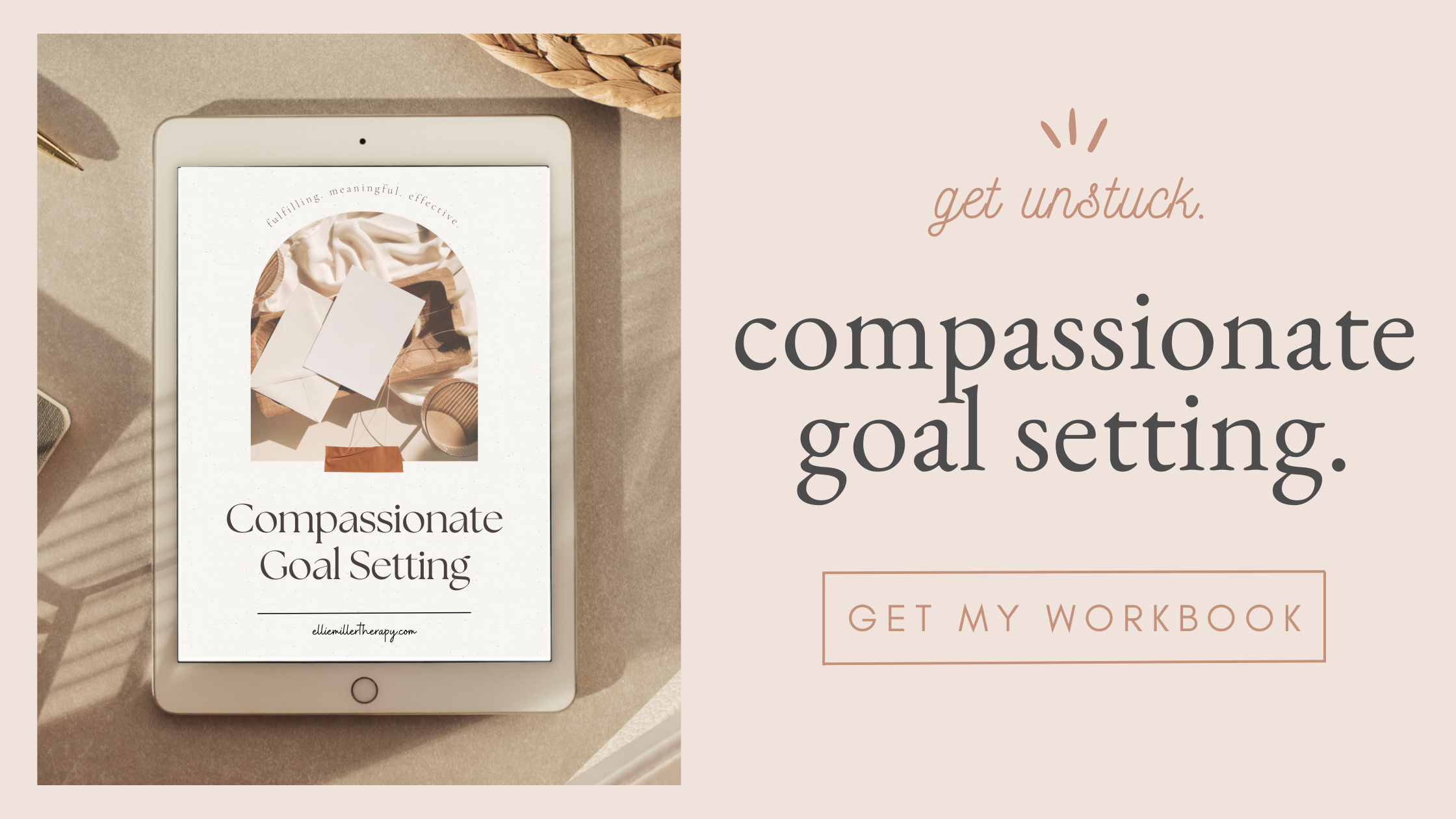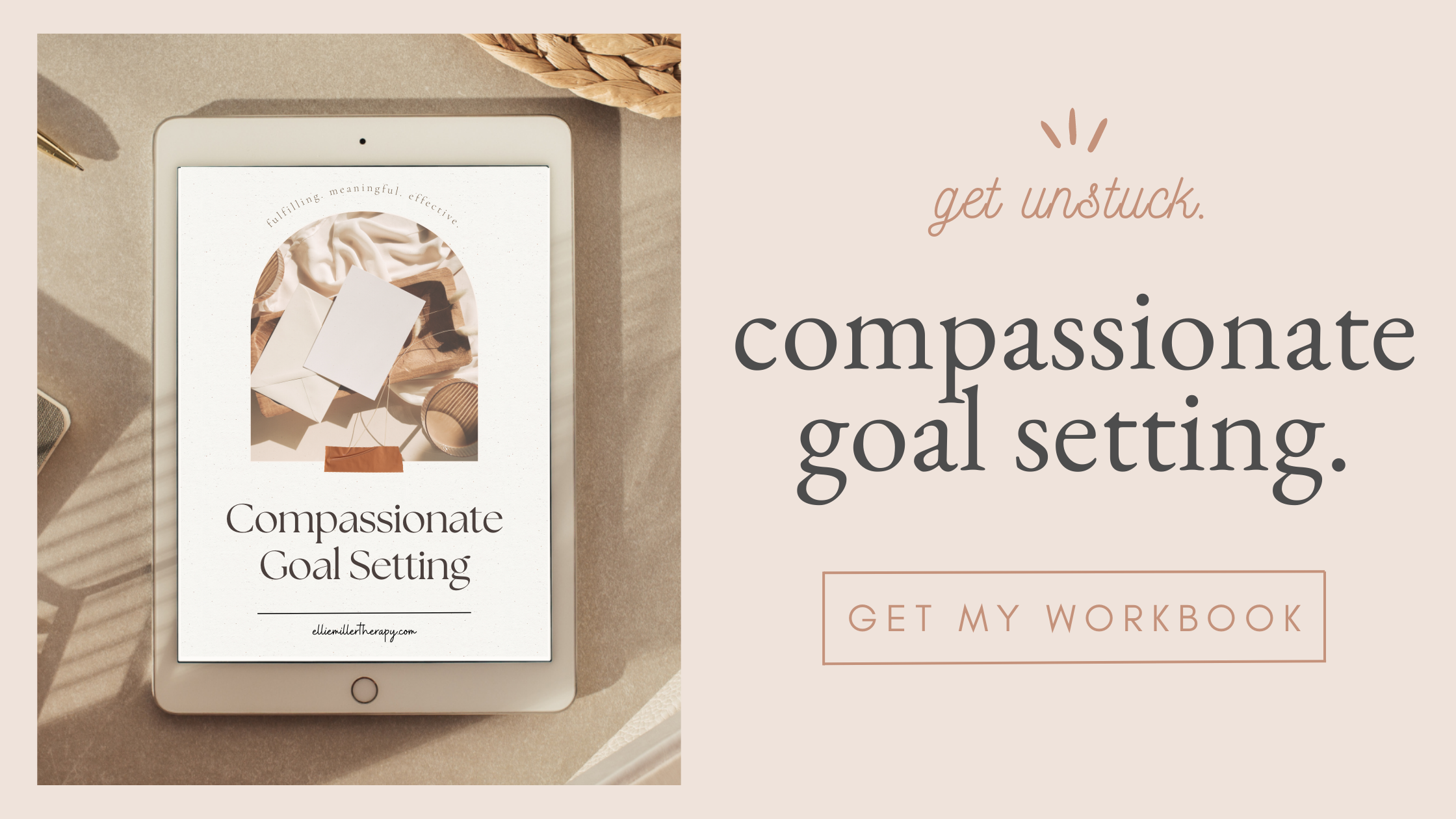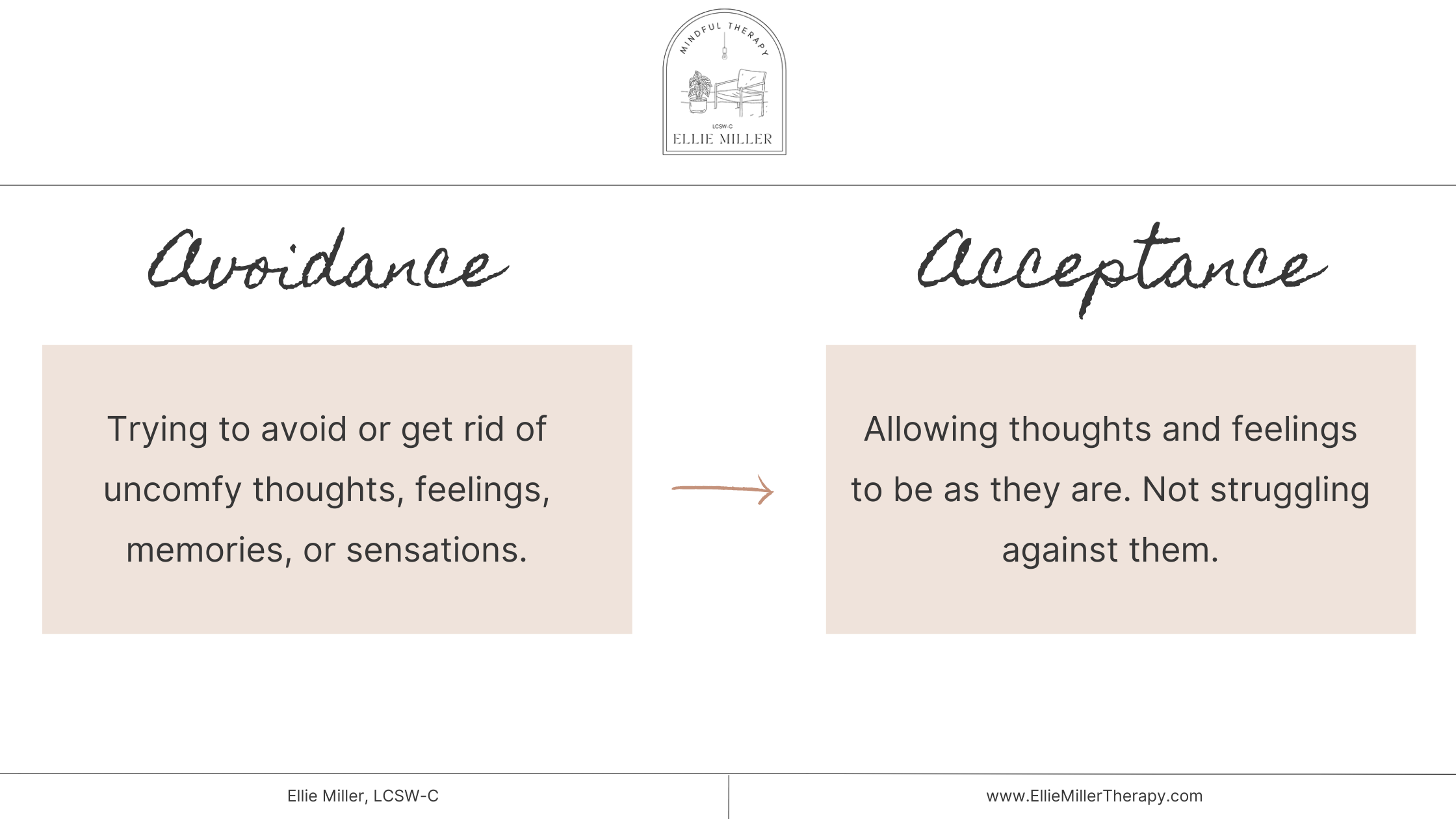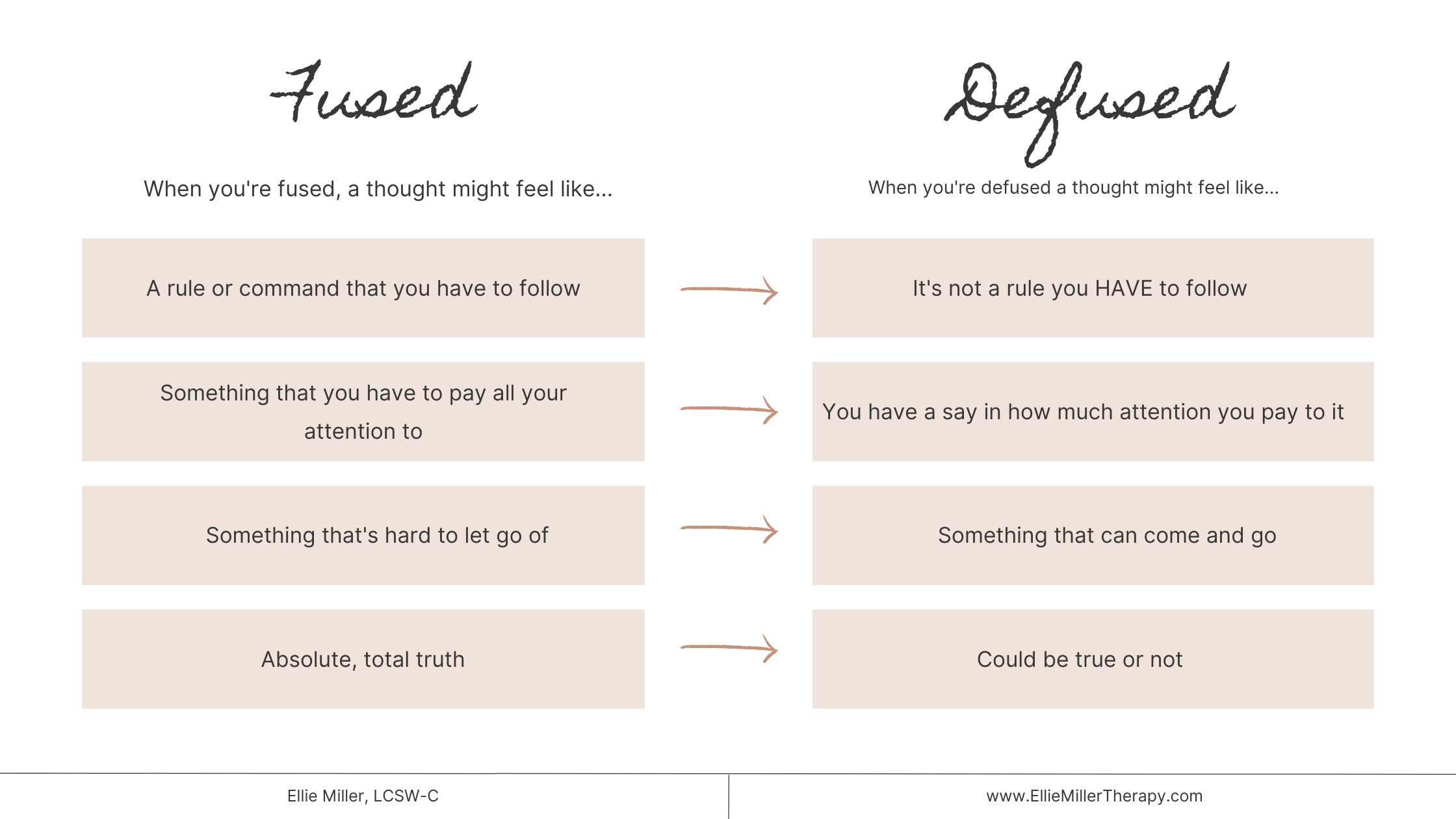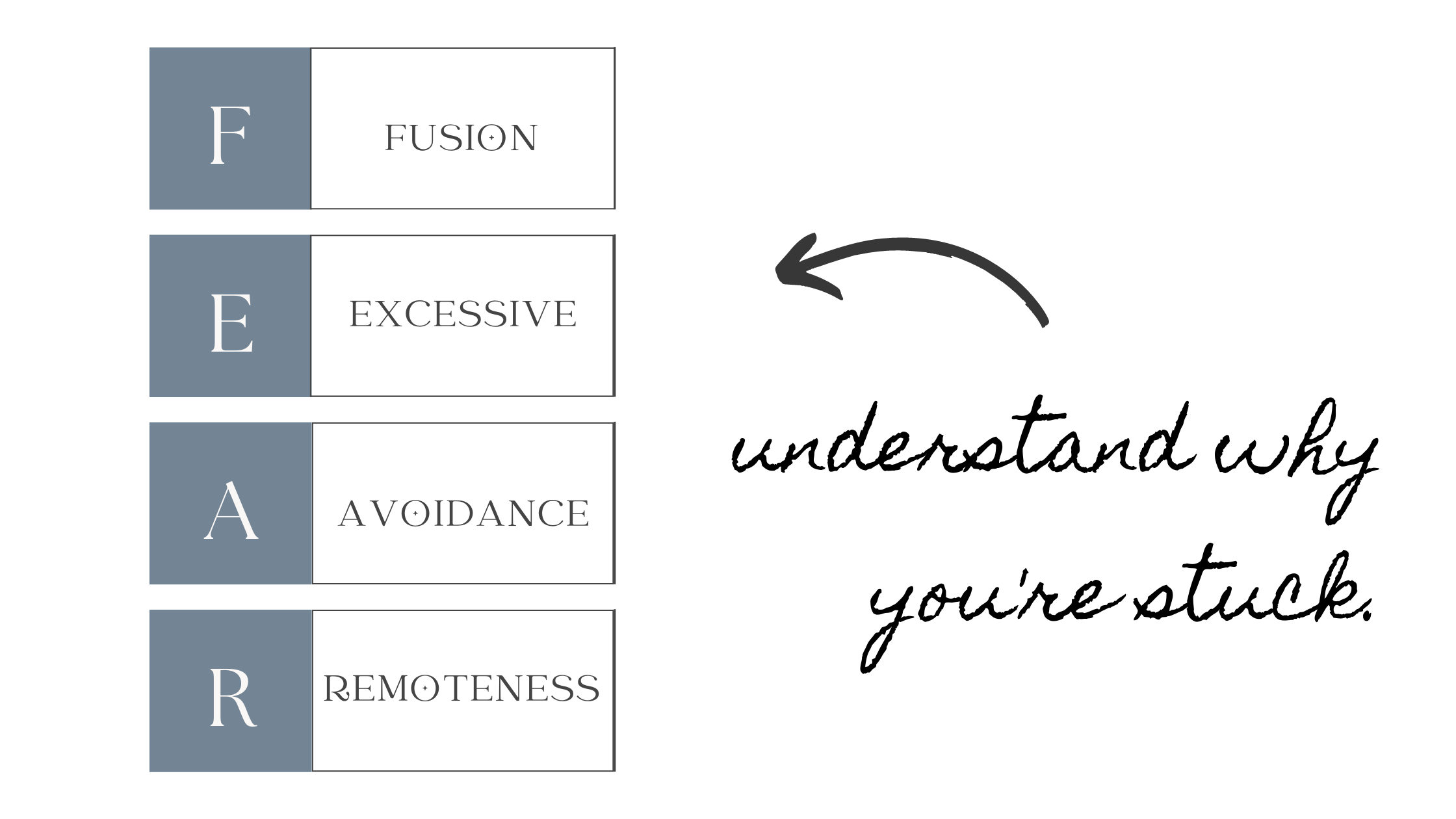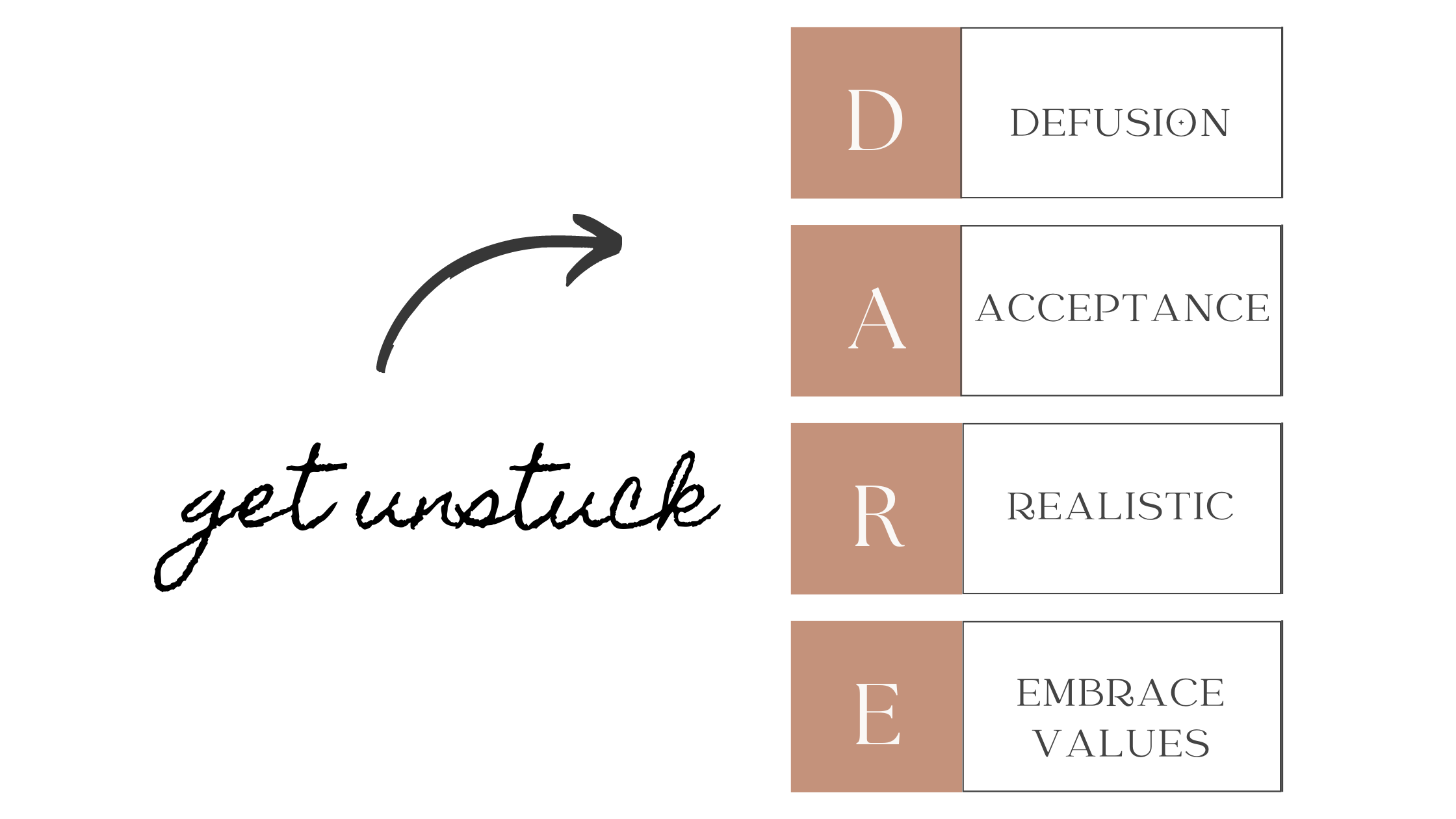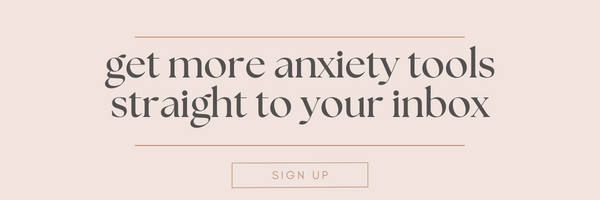How To Set Goals & Stick To ‘Em.
Meditating is the most helpful thing for me when it comes to easing stress and anxiety.
But I don’t wanna do it right now. I don’t feel like it.
If this brings to mind the image of a disagreeable toddler vehemently refusing to put their coat on even though it’s 20 degrees outside, then you are spot on my friend.
These low motivation periods are inevitable, but luckily I have some intel on how to set goals that are achievable and how to get unstuck when you hit those barriers.
I want you to feel confident on this ↓
How to get yourself to do the things that you KNOW are life enhancing, but just sometimes hard to follow through on.
I broke it down into 3 categories:
1.) How to pick a goal.
2.) How to plan a goal.
3.) How to deal when you get stuck.
Read on or click below to get your free copy of the goal setting workbook I made for ya.
✨A Note on Gentleness Before We Start.
I’m not about striving for perfection over here.
This isn’t about being the best version of yourself ever. I think you’re already quite lovely as you are. My hope is that this article has some nuggets for you if you’re in a place where you want to commit to taking some action and changing things up a bit.
But, I also want you to remember that there are times in life where our goals are gonna look VERY different. Maybe you’re facing some really big challenges and you have to adjust your expectations of yourself.
First and foremost, be gentle with yourself.
It’s all about checking in, and taking workable action where you can at this moment in life.
Step No.1
How To Pick A Goal.
Maybe you already have a clear idea of what you wanna work on, if so, skip this section.
BUT I figured I’d include some thoughts on how to decide what the heck you even wanna work on in the first place.
You could start by reflecting on the different areas of your life (work, relationships, health etc) and think, hey is there anything that would help make this area of my life more meaningful or manageable?
You could also have a look at the list I compiled in this goal setting workbook to drum some ideas up. I sifted through recent research to see which lifestyle habits help ease stress and anxiety.
If you need more ideas, check out this book on how to deal with stress and burnout. There are lots of easy, actionable, research backed ways to reduce stress. And there are summaries at the end of each chapter if you’re in a skimming kinda mood.
Step No. 2
How To Plan Your Goal
The Anatomy of an Achievable Goal.
Alright, so you have a general idea now of what you want to work on. What’s next?
Now you’re gonna get really clear on the specifics of the goal. I’ll also give a few tips on how to set yourself up for success.
SMART Goals
We’re gonna use the SMART goal format here. SMART is a neat little acronym that stands for: specific, measurable, actionable, reasonable, and time bound.
Breaking it down this way just helps you make sure your goal is one that is doable and achievable.
Example: I’m going to meditate for five minutes a day, every morning this week.
A Clear Action Plan.
Outline these things: where, when and how the goal is gonna happen. Write down the specific actions you want to take in working towards the goal.
I also want you to ask yourself, “how likely am I to follow through on this?”
If your answer is below a 7, go back and make that goal a little more doable. What could you change that would take you from a 7 to an 8?
Approach Vs Avoid Goals.
If you want to be more successful in your goal achievin’ ventures, make sure the goal your setting is an approach goal, not an avoid goal.
What’s that mean, you ask?
An approach goal is one in which you are moving towards a behavior or an outcome, while an avoid goal is one in which you are moving away from a behavior or outcome.
Examples:
Approach Goal: I want to hang out with my friends more.
Avoid Goal: I don’t want to spend the weekends alone.
Why does it matter? ⬇
Approach goals are associated with greater positive emotions, thoughts, and self-evaluations and greater psychological well-being.
In contrast, avoidance goals are associated with fewer positive thoughts and greater negative emotions. (Bailey, 2017)
A Values Based Goal.
When the going gets tough and you’re not feeling your goal anymore, even though deep down you know it would help you to keep working towards it, being in touch with your values is gonna keep you on that motivation track.
When we’re in touch with the “why”, the value that’s driving us towards our goal, it builds our motivation and makes us care enough to keep on going.
Have a Coping Plan Ready!
You will likely hit some roadblocks, that’s natural and to be expected. Reflect on what difficult thoughts and feelings you think might come up.
Are you willing to make room for some discomfort in the service of reaching this goal?
Do you have a plan for how you’ll deal with these blocks?
PSST I have a roadmap to help you deal with the barriers! Keep on readin’, or get the workbook below and fill out the prompts!
No.3
How to Deal When You Get Stuck.
Why Do We Get Stuck?
The Two Major Culprits are two psychological processes: experiential avoidance & cognitive fusion.
BTW they are normal and to be expected. So don’t worry. Literally every single one of us experiences these two fellas.
A.) Experiential Avoidance
This is when we try to avoid internal experiences that are unpleasant.
You know, uncomfy thoughts, feelings, memories, or sensations.
Experiential avoidance isn’t inherently a problem. It only becomes a problem when our avoidance strategies take us away from living the kinda life we want to live.
How does this get in the way of following through on goals you may ask?
Here’s an example.
Say your goal is to make more friends. But going out and meeting new people brings up social anxiety for you.
If you fall prey to experiential avoidance, you would avoid meeting new people because you don’t wanna feel the emotional discomfort those experiences bring up for you.
In this case, your attempts to avoid discomfort hold you back from your goal of making new friends.
B.) Cognitive Fusion
Cognitive fusion is when we get pulled around by our thoughts.
Think of what the word fusion means. I picture two pieces of metal being welded together. It’s like that: you and your thoughts are welded together.
When you’re fused, your thoughts are pulling you around, they feel like absolute truth, there’s a lack of perspective that helps you step back and realize thoughts are just thoughts.
Example: Let’s go with the same example from above. If you wanna make friends but you struggle with social anxiety, you might have thoughts like “I can’t do this, it’s gonna be uncomfy, I’m gonna say something stupid”.
If you’re fused with these thoughts, you’re totally buying into them, and a result, you sit out the opportunity to meet new people.
On the other hand, if you defuse from these thoughts. You’re able to recognize that they’re just thoughts. They’re not your master. You can unhook from the thought simply by saying, oh yeah, just a thought. And carry on your way to that party.
I also find it helpful to think of this as getting hooked and unhooked by thoughts.
Picture a fish swimming along on it’s merry way, when all the sudden it gets hooked by the fish hook thingy, now the fish hook is totally in control, pulling that poor fish this way and that.
It’s like that for us with thoughts. We’re minding our own business, when all the sudden a thought comes and hooks us. It pulls our focus away from the moment and takes control.
Get Clear on Your Stuck Points.
I love a good acronym.
Here’s one from psychologist Russ Harris (Harris & PhD, 2019). It breaks down the four things that generally keep us stuck in our goal attempts.
And would you look at that, I happened to include a worksheet with these steps in the goal workbook I made ya, so you can take some much deserved reflection time for yourself!
I’ll give you an explanation and example of each. Let’s use my low meditation motivation struggle for the example.
1.) Fusion.
What it is.
Like I mentioned above, getting fused or “hooked” is when you don’t have space from your thoughts and they’re bossing you around.
What sticky thoughts are pulling you around?
You gotta be aware of the thoughts that you’re hooked by if you want them to stop running the show.
Example.
“I don’t have time to meditate.” (I do.)
“I’d rather listen to a bachelor recap podcast” (don’t judge.)
2.) Excessive.
What it is.
Maybe you’re setting your sights a wee bit high? Can we make it more manageable?
Example: Am I being realistic? Is the goal to meditate for 20 minutes today too much for me right now?
3.) Avoidance
What it is.
What thoughts, feelings, sensations or memories are you avoiding?
Example.
I’ve been feeling restless which can be hard to sit with. That’s prob what I’m avoiding.
4.) Remoteness.
What it is.
Remoteness from your values.
If you wanna follow through on your goal, It’s important to be in touch with your values, your “why”. Why do you even want to do this thing in the first place?
You might have to ask this question a few times until you get to the value layer of it.
Example.
When I’m feeling resistant to meditating, I’m usually being driven by this feeling of “I should do this” instead of being guided by my values. Like a self inflicted guilt trip. Not fun.
Follow These 4 Steps To Get Unstuck.
Research shows that having a coping plan in place can help you follow through on the goals you set (Bailey, 2017). With the above FEAR steps we were anticipating, or noting what barriers come up.
Now let’s make a plan for how you’ll deal with these barriers!
1.) Defusion
How do we unhook from our thoughts? There are endless strategies for this(check out this amusing anxious thought tool) and honestly, this is one of the big perks of basic mindfulness meditation. It trains you to notice thoughts without getting pulled around by them.
I could go on and on about defusion, but here’s a little taste:
3 Easy Ways to Defuse:
Mentally say “I’m having the thought that (fill in the blank).
Mentally say “Just a thought”.
Mentally categorize the thought “oh, worrying.” or “planning”.
After any of these strategies, bring your focus back to the present moment.
2.) Acceptance of Discomfort
Acknowledge that discomfort is a part of life, normalize it, make room for it. It doesn’t have to guide you. If the discomfort feels like it’s too much, you may want to adjust your goal or get the support of a therapist. Again, I could go deep into this subject but here’s a primer:
3 Easy Acceptance strategies:
Mentally say, “This belongs.” or “Yes, ok, this discomfort is here”.
3.) Realistic Goals
What can I do to make this goal more realistic?
Ex: Instead of 20 minutes how bout I meditate for 5? Or could I bring mindfulness to the walk I was already planning on taking today?
4.) Embracing Values
Instead of being driven by shoulds, get in touch with your value. What value is guiding your desire to work towards this goal?
Ex: My “why” for meditating is that it helps me feel more alive, connected, and compassionate. These values matter a lot to me.
BTW ↓↓↓
Self Compassion Helps With Motivation.
I never want goal setting to feel like a harsh thing for ya. We’re not going for a drill seargent yelling at you through a megaphone vibe.
✨Whether you follow through on your goals or stay stuckity stuck stuck for a bit longer, you can still win if you’re tending to yourself with compassion.✨
Compassion is a win win because…
If you tend to your challenges and stuckness with compassion, you’re strengthening your compassion muscle. Which will make it easier to be kind and gentle to yourself in the future. And..
Self compassion is actually a goal motivator.
As self compassion researcher Kristin Neff points out, being self compassionate in the goal process is not the same as going “easy on ourselves”. It’s a way of offering a nourishing and supportive presence (Neff, 2015).
I want you to be your own cheerleader.
Go Ahead, Get Started.
Try it out for yourself now. Remember, writing this stuff down helps you get clear, organized and on track. Here’s what I want you to do:
Pick a goal, any goal
Fill out the goal action planning worksheet
Fill out The FEAR worksheet
Make a coping game plan with the DARE worksheet
And if this post was up your alley, join The Detangler crew. I’ll send you weekly emails with more anxiety handling tools and tips like this.
Think of it like detangling spray for your mind. Let’s undo those anxious knots, shall we?
Sources
Bailey, R. R. (2017). Goal setting and Action Planning for Health Behavior Change. American Journal of Lifestyle Medicine, 13(6), 615–618. https://doi.org/10.1177/1559827617729634
Harris, R., & PhD, S. H. C. (2019). ACT Made Simple: An Easy-to-Read Primer on Acceptance and Commitment Therapy (The New Harbinger Made Simple Series) (Second Edition, Revised). New Harbinger Publications.
Kristin. (2015, February 22). The motivational power of self-compassion - kristin neff. Self. Retrieved February 3, 2023, from https://self-compassion.org/the-motivational-power-of-self-compassion/
Hi! I’m Ellie, a private practice therapist offering online therapy to empathetic women & couples in Maryland, DC and Virginia. I help women manage anxiety & stress and couples strengthen their relationships.
Check out my freebie library to grab an anxiety relief tool. If you live in Maryland, DC or Virginia, reach out to see if we’re a good fit for therapy.

